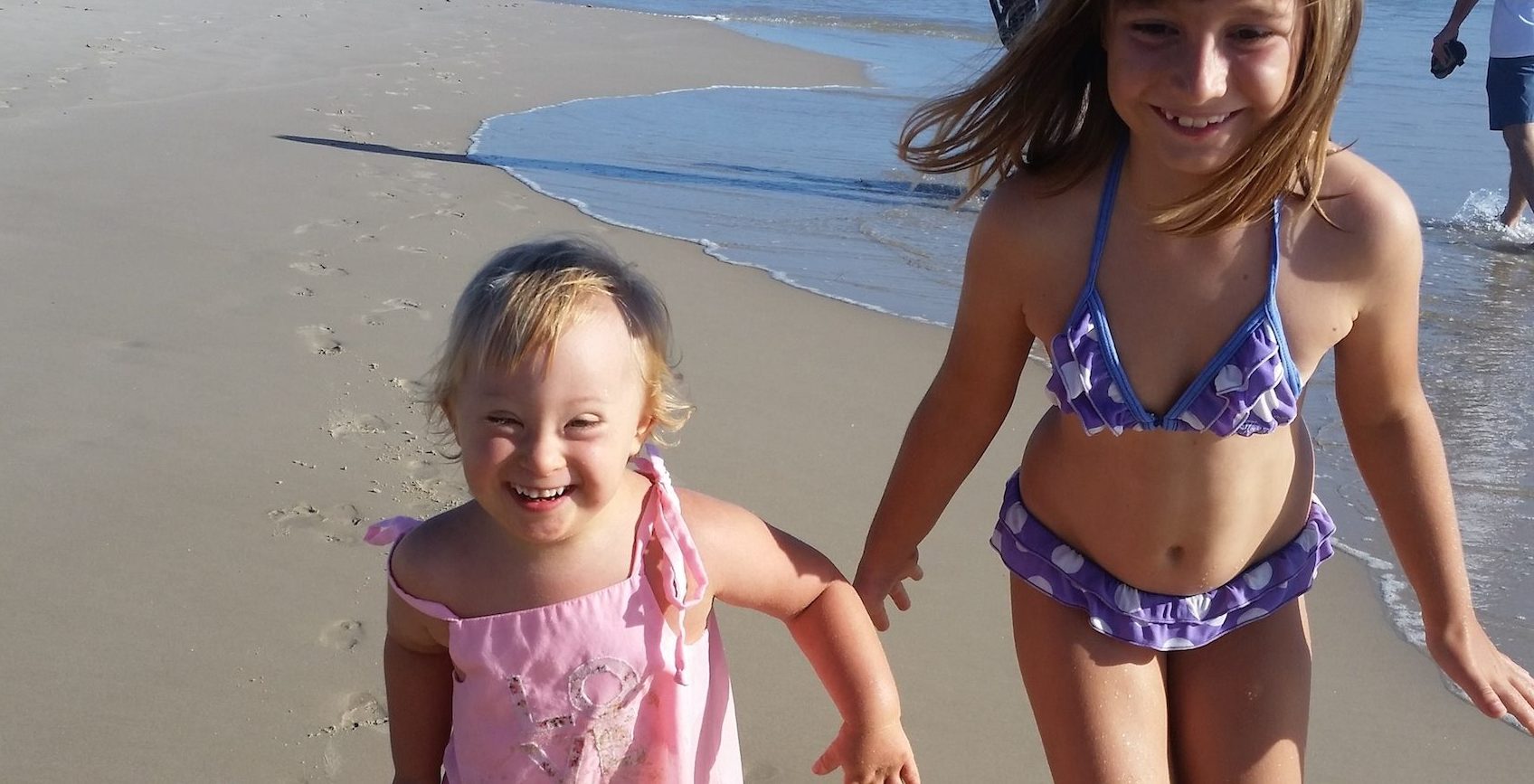Complementary & Alternative Medicine: talking about health + Down syndrome with Gabi Giacomin
Today, Gabi Giacomin outlines various Complementary Alternative Medicine and Therapies available for our children with Down syndrome. I feel as though more and more families are interested in exploring alternative options to round out the healthcare of their children, but sometimes it’s hard to know where to begin so I’m thankful to Gabi for her explanations. This is the second post in our series of four Monday Health Talks with Gabi. If you’d like to read the first post on Optimum Diet, you can click here.

In Australia, the demand for Complementary and Alternative Medicine (CAM) is increasing with 1 in 6 Australians using complementary healthcare therapists as their main form of healthcare. Naturopaths are the dominant modality accounting for 8.7 million consultations per year.
Many parents of children with Down syndrome have sought CAM Therapies to enhance cognition, but now more than ever they strive to bring about an improvement of symptoms. The more we understand the underlying causes, the easier it becomes to improve the physiology to the point where symptoms associated with Down syndrome may no longer present themselves.
Choosing a CAM Practitioner
When choosing a CAM Practitioner for a child with Down syndrome, the most important consideration is whether they have worked with a child with Down syndrome before. Children with Down syndrome need to be treated by a practitioner with a detailed knowledge of their unique biochemistry and developmental challenges. Always contact a practitioner before making an appointment, or read their website to determine if they have the level of experience you are seeking.
Most of the Therapies listed below have been developed for children with learning difficulties. In most cases, the practitioners are specifically trained with relevant knowledge and experience to enable them to address your child’s unique physiology.
Practitioners
Naturopathy is a holistic practice which encourages natural healing using minimally invasive methods and naturally occurring substances. A vitalistic, intuitive concept of the body is favoured and prevention of illness is obtained through stress reduction and a healthy diet and lifestyle. Naturopaths who specialise in Down syndrome focus on identifying the cause of disorder within the body and draw on a combination of modalities such as nutrition, phytotherapy, homeopathy, spirituality and lifestyle counselling for treatment. http://ndnr.com/pediatrics/new-research-for-treating-down-syndrome/

Nutrigenomics is an emerging science which combines the study of nutrition and genomic science to modify gene expression and modulate disease. Nutrigenomics is used to modify the over expression of genes on chromosome 21 in Down Syndrome (DS) using nutrition and phytochemicals. http://www.holisticheal.com/media/downloads/guide-to-nutrigenomic-testing.pdf
Osteopathy employs various manipulative techniques to balance the musculoskeletal system and facilitate health. It may be used effectively to treat oxygen deficiency which causes many symptoms associated with Down syndrome. Osteopathic techniques are used to correct misalignments of the palate and oral cavity, teeth, hearing and nervous system in children with DS. http://www.riverbendds.org/index.htm?page=handoll.html
Cranial Osteopathy is a gentle form of treatment which employs the body’s inherent healing mechanisms to release restrictions and correct patterns of strain. Slow rhythmic motion allows specific movement between bones present throughout the body. Cranial Osteopaths work with the rhymic pulse which nourishes and protects our nervous system. Osteopathy can reduce some of the severe and widespread physiological disorders in an individual with Down syndrome including maintaining airways, motor-coordination impairments, nervous system imbalances and cranial growth.
CranioSacral Therapy focuses on the membranes and cerebrospinal fluid surrounding the brain and spinal chord. Practitioners gently monitor the rhythm of the cerebrospinal fluid to detect and release imbalances and restrictions in membranes which are a potential cause of neurological, sensory and motor dysfunctions. http://downsyndromeupupupandaway.blogspot.com.au/2013/11/cranio-sacral-therapy-canadian-down.html
Chiropractic treatment is based on manipulation of misaligned joints, particularly of the spinal column, to improve energy flow and relieve disorders of muscles, organs and nerves. While chiropractic manipulation of the neck is not recommended in a person with Down Syndrome, they can still benefit from gentle, non-manipulative chiropractic techniques especially to reduce or eliminate symptoms of Atlanto-Axial Instability. http://www.scchiropractors.com.au/detail.php?pg=5&edu=27
Acupuncture is the science of rebalancing life energy throughout the body, via stimulation of special channels called meridians. There are 12 meridians which are connected with organs in the body. A dysfunctional organ will impair energy flow in the corresponding meridian. Acupuncture is used extensively throughout India to improve the wellbeing of those with Down syndrome. Fine steel needles are inserted into points on the body and are attached to an acustimulator machine for half an hour. Improvements in speech, facial features, socialisation, immunity, awareness, comprehension and physical mobility are reported. http://acupunctureonchallenged.blogspot.com.au/p/effects-of-acupuncture-on-children-with.html
Therapies
Neurodevelopmental Therapy (NDT) treats underlying neuromotor deficiencies, movement and postural disorders in people with neurological impairment. Maximisation of functional ability is the goal of NDT. ‘Neuro’ means brain and nerves. ‘Development’ refers to normal movement patterns necessary for performing functioning motor skills. Neurodevelopmentalists employ techniques such as Deep Pressure massage, Skin Sensor Stimulation and Hot/Cold Therapy to improve muscle tone, posture and movement in children with Down syndrome.
http://www.downsyndromeoptions.org/2013/03/ neurodevelopmental-treatment-just-one.html
The Institutes for the Achievement of Human Potential (IAHP) uses neurodevelopment programs to significantly improve the ability of a child with a brain injury to learn, communicate, problem solve and perform at age level or above. Their programs use techniques such as:
- patterning – manipulation of head and limbs in a rhythmic process
- creeping – moving the body forward with the abdomen contacting the floor
- crawling – moving the body forward with the abdomen raised from the floor
- receptive stimulation – auditory, tactile and visual stimulation
- expressive activities – picking up objects
- masking – increasing cerebral blood flow by breathing into a mask to increase inhaled Carbon Dioxide
- brachiation – swinging from a vertical ladder or monkey bar gravity/antigravity activities – hanging upside down, rolling and somersaulting

MNRI Therapy stimulates reflexes to facilitate improved physical, emotional and cognitive skills. A reflex is viewed as a genetic motor code for primary and conscious motor development. MNRI techniques are designed to restore neuro-sensory-motor development, integrate primary movements, reflexes, co-ordination systems and skills to enable optimal functioning, development and learning. MNRI addresses the underlying cause of dysfunction, assisting children with Down syndrome to improve postural control, motor development, fine motor coordination, speech and thinking processes, and learning skills. http://masgutovamethod.com/_uploads/_media_uploads/_source/Down_Syndrome_2-24-2015-DOWN_SYNDROME.pdf (this one takes a little while to load)
The Tomatis Method facilitates a connection between auditory and listening processes by retraining the ear and re-patterning the nervous system with an ‘electronic ear’ device. It is governed by the principle that if the imperfect ear is given a chance of hearing correctly, the voice instantly and unconsciously improves. Children with Down syndrome can experience improved hearing, language comprehension and experience significant improvements in speech producing greater interest in their environment and willingness to learn. http://listeningcentre.com/pdf/02down_syndrome.pdf
Anat Baniel Method (ABM) is derived from cutting-edge scientific theory of how our brain learns and transforms our body, mind and spirit. The AB method accesses the brains remarkable capacity to form new connections and patterns to reach optimum levels of achievement and overcome limitations. Children with Down syndrome can improve their ability to move, think and interact using this novel neuro-movement technique. http://www.anatbanielmethod.com/children-with-down-syndrome-can-be- brilliant-learners
Orofascial Myology treats the muscles of the mouth and face with the aim of improving tone and movement ability. It corrects activities of the jaw, lips and tongue so that normal development and growth can proceed in a balanced environment. Therapy is aimed at improving habits such as thumb sucking, teeth grinding, range of motion and postural habits of the jaw, lips and tongue. Children with Down syndrome can benefit from this therapy for tongue placement, lip closure and swallowing. When tongue placement is improved lip closure and speech can also improve. http:// orofacialmyology.com/files/DOWN_SYNDROME.pdf
When choosing any therapy for your child, it’s important that you feel comfortable with both the method and the practitioner. A great starting point is to think about what areas you’d like to assist your child in – do you have any particular concerns, or are you just looking to enhance your child’s health and development? Chat to other parents who are interested in holistic health to find out what therapies and practitioners they have used and would recommend. Some therapies often work well in combination, so it’s great if you can find therapists who are happy to communicate with each other to ensure everyone is on the same page with regard to your child. The important thing to remember is that mainstream healthcare isn’t the only option – there are quality alternative and Complementary Medicine and Therapies available that can help your child to thrive, either in conjunction with or in areas where perhaps mainstream medicine hasn’t been able to provide the right solution.
Bibliography
Xue C, Zhang AL, Lin V, Da Costa C, Story DF. Complementary and Alternative Medicine Use in Australia: A National Population-Based Survey.The Journal of Alternative and Complementary Medicine. August 2007, 13(6): 643-650. Published in Volume: 13 Issue 6: August 25, 2007
Yasko, A. (2009) Autism: Pathways to Recovery. Neurological Research Institute, Bethel Maine
Zollman, C. Vickers A. What is complementary medicine? BMJ 1999;319:693
Roizen NJ. Complementary and alternative therapies for Down syndrome. Ment Retard Dev Disabil Res Rev. 2005;11(2):149-55.
Handoll N. The osteopathic management of children with Down’s syndrome. British Osteopathic Journal 21, 1998: Vol:XXI 11–20
La Francis ME. A chiropractic perspective on atlantoaxial instability in Down’s syndrome. J Manipulative Physiol There. 1990 Mar-Apr;13(3):157-60.
Prussing E, Sobo EJ, Walker E, Kurtin PS. Between ‘desperation’ and disability rights: a narrative analysis of complementary/alternative medicine use by parents for children with Down syndrome. Social Science & Medicine. Volume 60, Issue 3, February 2005, Pages 587–598
Uyanik M, Bumin G, Kayihan H. Comparison of different therapy approaches in children with Down syndrome. Pediatr Int. 2003 Feb;45(1):68-73.
Brown KA, Patel DR. Complementary and alternative medicine in developmental disabilities. The Indian Journal of Pediatrics. November 2005, Volume 72, Issue 11, pp 949-952
Mahoney G, Glover A, Finger I. Relationship between language and sensorimotor development of Down syndrome and nonretarded children. Am J Ment Defic. 1981 Jul;86(1):21-7.
Bruni M, Cameron D, Dua S, Noy S. Reported sensory processing of children with Down syndrome. Phys Occup Ther Pediatr. 2010 Nov;30(4):280-93.
